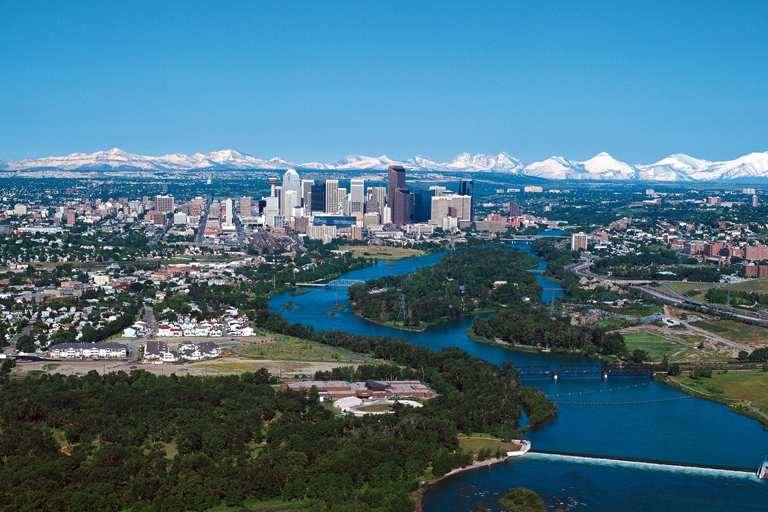
Per capita GDP in 2009 ranged from a high of $65,404 in Regina to a low of $28,750 in Abbotsford. Aside from Regina, the other top 10n CMAs include Calgary, Edmonton, Ottawa-Gatineau. St. John’s, Saskatoon, Toronto, Victoria, Vancouver and Guelph. Out of the top 10, six of them are in western Canada, three are in Ontario/Quebec and only one in Atlantic Canada. Along with Abbotsford, the bottom 10 CMAs include Oshawa, Barrie, Brantford, St. Catharines-Niagara, Sherbrooke, Peterborough, Kelowna, Trois-Rivières, and Windsor. Of the bottom 10, only two are in western Canada, six are in Ontario, and two are in Quebec.
Needless to say, these results show that the shift in economic power to western urban centres from central Canada predates the Great Recession and has been well underway since the start of the 21st century. The commodity boom of the 21st century has been fueling the rise of the west while industrial malaise has been afflicting central Canada.
When it comes to per capita GDP growth, the greatest growth was for Regina, Saskatoon and St. John’s, while the lowest growth was for Guelph, Windsor and Oshawa. Between 2001 and 2009, Regina saw its nominal per capita GDP grow an astounding 69 per cent while Saskatoon was close behind at 61 per cent. Interestingly enough, the top 10 also include Victoria, Edmonton, Sudbury, Moncton, Kingston, Quebec City and Saguenay – but not Calgary, which comes in 11th spot with growth of 38 per cent.
The 10 worst performing CMAs when it comes to per capita GDP growth ranged from Thunder Bay with a growth rate of 27 per cent to Oshawa which saw a decline of 23 per cent. Between these two were Montreal, Kitchener-Waterloo, Hamilton, St. Catharines-Niagara, Brantford, Toronto, Guelph, and Windsor. The bottom 10 are all from central Canada with nine of them from Ontario and one from Quebec.
While Toronto contributes 20 per cent of Canada’s GDP, its rate of nominal per capita GDP growth was the fourth lowest in the country. Indeed, with inflation over this nine-year period at about 2 per cent per year, Toronto’s 17 per cent nominal per capita GDP growth means its real per capita GDP has essentially stood still for a decade.
Yet one needs to temper this analysis with the fact that the reason per capita GDP growth is as low as it is in some CMAs can be because of population change. Toronto’s poorer per capita GDP growth performance needs to be counterbalanced by the fact that it remains a magnet for migration on par with western CMAs and without the benefit of a resource sector boom.
Of the 33 CMAs in the report, over the period 2001 to 2009, Toronto had the sixth fastest growing population while Barrie had the fifth fastest. Kelowna was fourth and Oshawa third in population growth. Calgary, which was not in the 10 highest CMAs for per capita GDP growth, nevertheless had the highest population growth rate of all the CMAs at 25 per cent followed by Edmonton at 20 per cent. On the other hand, Regina, which had the highest per capita GDP growth, only had population growth of about 6 per cent.
Oshawa’s decline in per capita GDP is a function of its depressed auto sector manufacturing economy as well as its role as a bedroom community for the GTA, which gave it the third fastest growing CMA population in the country. Thunder Bay and Saguenay – which fare relatively well in per capita GDP and per capita GDP growth, however had shrinking populations over this time period.
These urban GDP figures paint a complex picture of economic change in Canada as they combine economic output and growth with the effects of changing populations and migration patterns. A dynamic economy is a combination of rising output, combined with growing employment and population as migrants are attracted by economic opportunity. Rapidly growing populations in the pursuit of economic opportunity may understate per capita GDP growth in booming regions while population decline in economically slower regions may overstate their per capita GDP performance.
Livio Di Matteo
Livio Di Matteo is Professor of Economics at Lakehead University.
________________________________________
Troy Media





